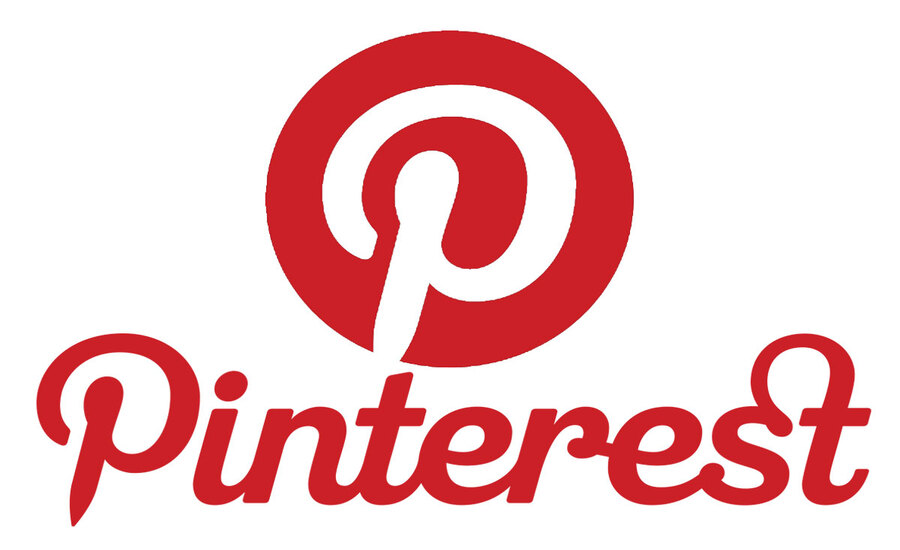The Ultimate Guide to Pinterest: Mastering the Platform for Unmatched Success
Pinterest, often regarded as a visually engaging platform, has evolved from being a digital pinboard into a powerful social media and marketing tool. What was once primarily a place for creative inspiration has grown into a robust ecosystem where businesses, influencers, and individuals can thrive. With over 450 million active monthly users, Pinterest offers unique opportunities for brand visibility, traffic generation, and audience engagement. Whether you’re a business owner, a content creator, or someone looking to expand your online presence, mastering Pinterest can significantly elevate your digital strategy.
In this comprehensive guide, we’ll dive deep into the world of Pinterest. We’ll cover everything from understanding how the platform works to crafting successful Pinterest strategies that will set you apart. By the end of this guide, you’ll have the knowledge to transform Pinterest into a key asset for your personal or professional brand.
Understanding Pinterest: The Basics
Before diving into advanced strategies, it’s important to understand the basics of how Pinterest works and what sets it apart from other social media platforms. Unlike Instagram, Twitter, or Facebook, Pinterest is a hybrid platform that functions both as a social network and a search engine. Users can follow others, comment, and engage with pins, but much of Pinterest’s success stems from its search ability and visual discovery features.
Pinterest as a Visual Search Engine
At its core, Pinterest functions like a search engine. Users input keywords or phrases to find images, ideas, and products relevant to their interests. The platform’s algorithm surfaces the most relevant pins based on these search terms, providing personalized recommendations. Pinterest’s search functionality makes it unique among social media platforms, positioning it as a visual discovery tool where users can find inspiration for everything from home decor and fashion to recipes and business ideas.
By treating Pinterest as a search engine, businesses and individuals can optimize their content for discoverability. Pinterest relies heavily on keywords and relevance, so understanding how to strategically optimize pins with the right keywords is essential to gaining traction.
How Pinterest Differs from Other Social Platforms
Pinterest may seem similar to Instagram in its visual focus, but the user behavior and platform dynamics are different. While Instagram relies on social interaction, immediate engagement, and personal connections, Pinterest is much more goal-oriented. People visit Pinterest not just to browse but to find specific information, save ideas, and act on those ideas later. Pinterest users are planners—they’re looking for solutions, and they’re often further along in the decision-making process.
This behavior makes Pinterest particularly valuable for businesses and content creators. Whether it’s driving traffic to your website, generating sales for an online store, or growing a mailing list, Pinterest offers a more sustained and purposeful engagement than many other social platforms.
Setting Up Your Pinterest Profile for Success
Creating a Pinterest account is simple, but optimizing it for success requires careful consideration. To fully utilize Pinterest’s potential, you need to approach your profile with a strategic mindset.
Choosing the Right Account Type: Personal vs. Business
If you plan to use Pinterest for marketing or business purposes, it’s crucial to choose a business account over a personal one. A Pinterest business account unlocks several key features, including Pinterest Analytics, access to advertising options, and the ability to use rich pins. These tools provide valuable insights into how your content is performing and allow for more in-depth targeting and promotion opportunities.
If you’re already using a personal account, you can easily switch it to a business account in your settings. This transition allows you to maintain your existing followers and content while gaining access to advanced business tools.
Crafting an Optimized Profile
Your Pinterest profile should clearly communicate your brand’s identity and goals. The following elements are key to optimizing your profile:
- Profile Picture: Use a professional image or your brand’s logo for consistency across platforms.
- Bio: Craft a concise bio that includes relevant keywords and clearly describes who you are and what you offer. Use this space to capture the attention of potential followers.
- Website Verification: Verifying your website not only adds credibility to your profile but also enables Pinterest to track traffic, giving you access to advanced analytics.
- Boards: Organize your content into thematic boards that are relevant to your target audience. Each board should be well-titled and include a description with strategic keywords.
Understanding Pinterest SEO
Pinterest SEO (Search Engine Optimization) plays a vital role in how your pins are discovered by users. Just as websites optimize for Google search, Pinterest users must optimize their content to rank highly in Pinterest searches.
Keyword Research on Pinterest
The first step in Pinterest SEO is identifying the right keywords. Keywords help Pinterest’s algorithm understand what your pins are about and show them to the right audience. The easiest way to perform keyword research is by using Pinterest’s search bar. Start typing a relevant keyword related to your niche, and Pinterest will auto-suggest related phrases. These suggestions are valuable because they indicate what users are searching for.
Another effective way to gather keyword ideas is by looking at competitors’ profiles and pins that perform well. Analyze the keywords they’re using in their pin titles and descriptions, and identify patterns or terms that could work for your content.
Optimizing Your Pins for SEO
Once you’ve identified the relevant keywords, it’s time to optimize your pins. Here are key elements to focus on:
- Pin Titles and Descriptions: Ensure that your pin title and description are keyword-rich. Use natural language and avoid keyword stuffing, which can appear spammy and harm your ranking.
- Board Titles and Descriptions: Just like pins, your boards should be optimized with relevant keywords. This helps Pinterest understand what your board is about and improves its discoverability.
- Alt Text for Images: The alt text of your images should include keywords. Pinterest often pulls this data to help categorize and rank pins in search results.
- Consistent Pinning: Regularly pinning high-quality content, either your own or curated from others, signals to Pinterest that your account is active and authoritative. Consistency boosts your ranking over time.
Creating Engaging Pinterest Content
Pinterest thrives on visually appealing, valuable content. Crafting pins that capture attention and inspire action is the key to gaining traction on the platform. There are several factors to consider when creating Pinterest content.
The Power of High-Quality Visuals
Pinterest is a visual platform, which means high-quality images are essential. The most successful pins are eye-catching, well-designed, and often feature high-resolution images that draw the user’s attention.
- Vertical Images: Pinterest favors vertical images because they take up more space on users’ screens, making them more likely to catch the eye. A 2:3 aspect ratio is ideal for Pinterest pins.
- Clear and Concise Text Overlays: Adding text to your pins can significantly increase engagement. Text overlays should be clear, readable, and convey the primary message of your pin. Whether it’s a catchy headline, a call to action, or a summary of the content, the text should enhance the visual without overwhelming it.
- Brand Consistency: Maintain a consistent visual aesthetic that aligns with your brand. This could be achieved through specific color schemes, fonts, or design elements. Brand consistency helps users immediately recognize your pins and builds familiarity over time.
Designing for Engagement
Engagement on Pinterest is not just about pinning attractive images; it’s also about offering valuable content that users want to interact with. Consider the following strategies to boost engagement:
- Educational and How-To Pins: Content that teaches users something new, such as step-by-step tutorials, tends to perform well on Pinterest. Break down complex information into simple, actionable steps.
- Inspirational Quotes and Ideas: Inspirational pins resonate with Pinterest’s audience, who often visit the platform for motivation. Share positive, aspirational content that encourages users to save and share.
- Calls to Action: Don’t be afraid to tell your audience what to do. A clear call to action (CTA) such as “Learn More,” “Shop Now,” or “Get the Guide” can significantly increase user interaction.
By focusing on both the aesthetics and value of your pins, you can create content that not only looks good but also encourages users to take action, whether that’s saving, clicking, or purchasing.
Leveraging Pinterest Analytics
Pinterest Analytics provides invaluable data that can guide your content strategy and help you understand what works and what doesn’t. By regularly reviewing your analytics, you can make informed decisions about how to refine your approach for better results.
Key Metrics to Track
Pinterest offers several key metrics that can help you measure your performance:
- Impressions: This metric shows how often your pins are shown to users. High impressions indicate that your content is being surfaced by Pinterest’s algorithm, either in search results or users’ home feeds.
- Engagements: Engagements include actions such as pin saves, clicks, or closeups. This metric helps you gauge how well your content is resonating with users.
- Outbound Clicks: Outbound clicks track how often users click on a pin and are directed to your website or landing page. This metric is crucial for understanding how much traffic Pinterest is driving to your site.
- Audience Insights: Pinterest’s Audience Insights feature allows you to learn more about your followers’ demographics, interests, and behaviors. This data can inform your content creation by showing you the types of content that your audience prefers.
Using Analytics to Refine Your Strategy
Analytics allow you to continuously improve your Pinterest strategy. Here’s how you can use data to your advantage:
- Identify Top-Performing Pins: Regularly check which pins are receiving the most impressions, clicks, and saves. By identifying top-performing pins, you can replicate their success by creating similar content or promoting them to a wider audience.
- Track Trends Over Time: Pinterest is a seasonal platform, with trends shifting throughout the year. Monitor how your content performs during different seasons or events, and adjust your pinning strategy accordingly. For example, holiday-related content might perform well in the months leading up to those holidays.
- A/B Testing: Experiment with different types of content, such as varying designs, CTAs, or keyword placements. By testing multiple versions of pins, you can determine what resonates best with your audience and fine-tune your strategy.
Pinterest Advertising: Promoted Pins
While organic reach on Pinterest can be incredibly effective, utilizing paid advertising can take your Pinterest strategy to the next level. Pinterest offers various advertising options, with Promoted Pins being the most common.
What Are Promoted Pins?
Promoted Pins are regular pins that businesses pay to boost. These pins appear in relevant search results, user feeds, and category pages, reaching a broader audience than they would organically. Promoted Pins blend seamlessly into the Pinterest experience and are identified by a “Promoted” label.
Types of Pinterest Ads
Pinterest offers a variety of ad formats to suit different objectives:
- Standard Promoted Pins: These ads look just like regular pins and appear in users’ home feeds and search results. They’re ideal for driving traffic to a website or generating brand awareness.
- Video Pins: Video pins are particularly engaging and effective for storytelling. They auto-play in users’ feeds, making them eye-catching and interactive.
- Shopping Ads: These ads allow users to purchase directly from Pinterest, making them perfect for e-commerce businesses looking to drive sales.
- Carousel Ads: Carousel ads feature multiple images within a single pin. This format is ideal for showcasing a range of products or telling a story through a series of visuals.
Setting Up a Pinterest Ad Campaign
To set up a successful Pinterest ad campaign, follow these steps:
- Choose Your Objective: Pinterest allows you to choose from several campaign objectives, such as increasing brand awareness, driving traffic, or generating conversions.
- Define Your Target Audience: Pinterest’s targeting options are extensive. You can target users based on demographics, interests, keywords, and behaviors. You can even create custom audiences using email lists or website traffic.
- Set Your Budget: Pinterest ads are flexible when it comes to budget. You can set a daily or lifetime budget and adjust your spending as needed.
- Optimize for Success: Like organic pins, promoted pins need to be visually appealing and keyword-optimized. Use high-quality images and ensure that your pins include strong CTAs to encourage clicks.
Key Tips for Pinterest Success
- Use High-Quality Images: Pinterest is a visual platform, and high-quality images are critical to attracting attention. Always use crisp, clear visuals that stand out.
- Incorporate Keywords: Optimize your pin titles, descriptions, and board names with relevant keywords to increase your chances of being discovered.
- Create Engaging CTAs: A strong call to action in your pins can significantly increase engagement rates. Whether it’s “Shop Now” or “Read More,” make sure your CTA is visible and actionable.
- Pin Consistently: Consistency is key on Pinterest. Aim to pin daily to keep your content fresh and relevant.
- Utilize Pinterest Analytics: Regularly analyze your Pinterest performance to see what’s working and where you can improve.
Building a Community on Pinterest
Pinterest may not be a traditional social network, but that doesn’t mean you can’t build a dedicated community of followers. Engaging with your audience and growing your following can turn Pinterest into a powerful tool for long-term success.
Growing Your Followers Organically
While Pinterest is more about search and discovery than social interaction, growing your follower base can help increase the reach of your content. Here are some effective strategies for building a strong following:
- Share Valuable Content Regularly: Consistent pinning of high-quality content keeps your profile active and helps you show up more often in search results. Aim to post valuable content that your target audience will want to save or click through.
- Engage with Others: While Pinterest isn’t as interactive as platforms like Facebook or Instagram, engaging with other users can still boost your visibility. Repin content from other users, comment on pins, and join group boards to expand your reach.
- Cross-Promote on Other Platforms: Use your other social media profiles, such as Instagram, Twitter, or Facebook, to promote your Pinterest account. Encourage followers from other platforms to follow you on Pinterest for exclusive content or inspiration.
Conclusion:
Pinterest is a fast platform that, when used correctly, can become a game-changer for your brand or business. By optimizing your profile, mastering Pinterest SEO, creating engaging content, and leveraging analytics and advertising, you can drive significant traffic, increase engagement, and build a community of dedicated followers.
Whether you’re using Pinterest to showcase your creative work, grow your blog traffic, or drive sales for your business, the potential for success is vast. The key to mastering Pinterest is consistency, creativity, and a strategic approach. By following the insights and strategies outlined in this guide, you’re well on your way to achieving unmatched success on Pinterest.






